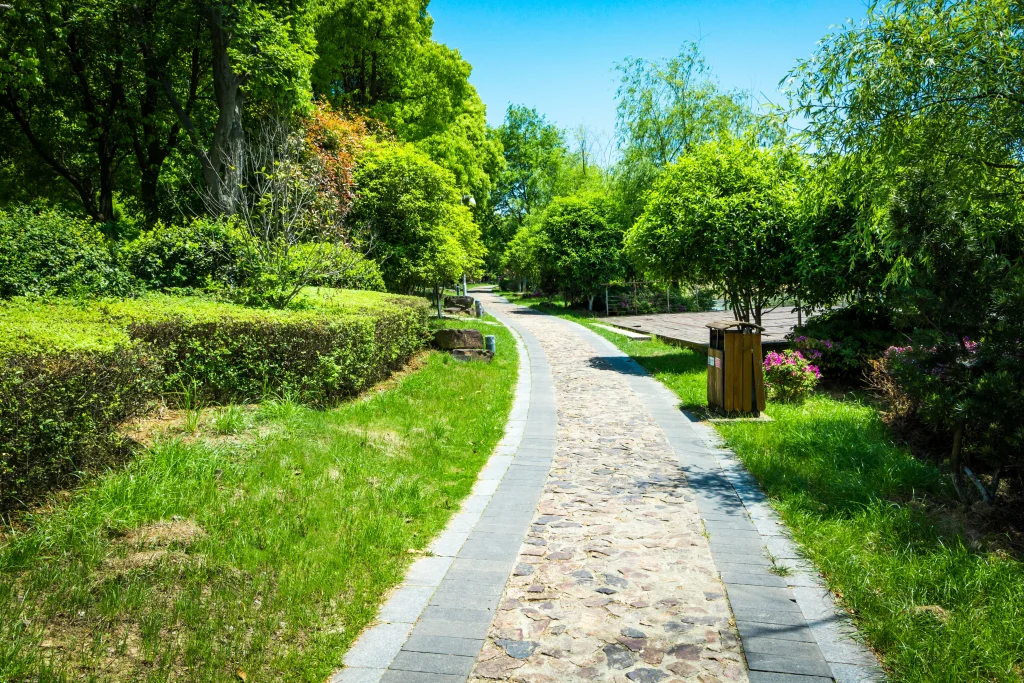Building your own flower bed offers significant advantages beyond simple cost savings:
- Water-efficient gardens reduce monthly utility bills while increasing property value.
- Native and adapted plants support local pollinators, creating ecosystems that benefit the entire community.
- Most importantly, a well-designed flower bed provides year-round visual appeal that enhances your home’s curb appeal.
This comprehensive guide provides step-by-step on how to make a flower bed tailored specifically for Colorado gardeners.
Whether you’re new to the area or seeking to improve your existing landscape, these proven techniques will help you create a thriving flower bed that withstands Denver’s challenging climate conditions.
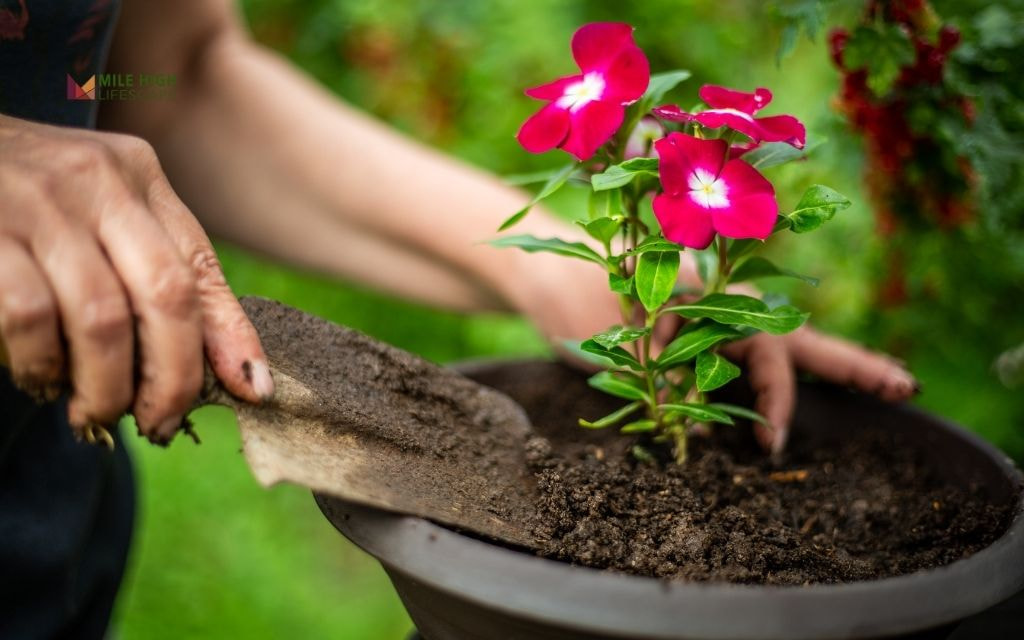
Step-by-step Guide: How to Make a Flower Bed in Denver
Step 1: Choose the Right Location for Your Flower Bed
Selecting the proper location determines your flower bed’s long-term success.
Most flowering plants require at least 6 hours of direct sunlight daily, making south and southeast-facing areas ideal choices. These locations warm earlier in spring, extending your growing season and protecting tender plants from late frost damage.
Areas near south-facing walls reflect additional heat, creating warmer zones perfect for heat-loving perennials. Conversely, north-facing slopes remain cooler and hold moisture longer, suiting shade-tolerant varieties.
Wind exposure also impacts plant health in Colorado’s open landscape.
Strong chinook winds can desiccate plants and topple tall flowers. Choose locations with natural windbreaks like fences, walls, or existing shrubs. If your chosen spot lacks protection, plan to install temporary barriers during establishment.
Proper drainage prevents root rot and fungal diseases common in Colorado’s clay soil. Avoid low-lying areas where water collects after storms. If your ideal location has drainage issues, consider raised beds or French drain installation to redirect excess moisture.
Step 2: Plan Your Flower Bed Design with Local Climate in Mind
Effective flower bed design balances visual appeal with practical maintenance requirements.
- For beginners, rectangular or gently curved beds work best, providing clear sight lines and easy access for care tasks.
- Avoid complex shapes that create hard-to-reach corners where weeds establish and maintenance becomes difficult.
- Keep bed depth between 3 and 4 feet maximum. This allows you to reach the center from either side without stepping on soil and compacting root zones. Wider beds require stepping stones or permanent pathways to prevent soil damage during routine care.
- Plan irrigation from the beginning rather than retrofitting later. Drip irrigation systems work well for flower beds, delivering water directly to root zones while minimizing evaporation. Soaker hoses provide a budget-friendly alternative that achieves similar results.
- Design pathways and access points before planting. You’ll need regular access for deadheading, weeding, and seasonal plant replacement.
Sketch your design on paper or use landscape design apps to visualize the final result. You can ask professionals to help create the design for you.
Remember: Include mature plant sizes in your planning to prevent overcrowding issues that develop over time. Consider seasonal color progression, placing spring bloomers near summer varieties for continuous display.
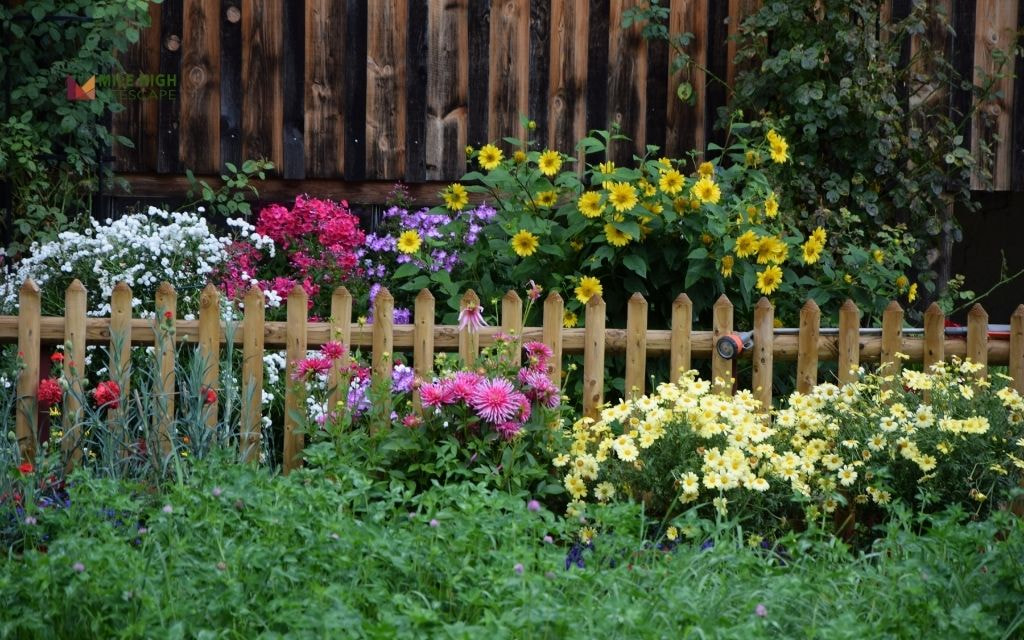
Step 3: Prepare the Ground or Raised Bed Base
Proper ground preparation creates the foundation for healthy plant growth.
- Remove existing sod, weeds, and debris from your designated area.
- Solarization works well in intense summer sun (cover the area with clear plastic for 6 – 8 weeks to kill grass and weed seeds naturally).
- Manual removal provides immediate results when time is limited. Cut sod into manageable sections and remove completely, including root systems.
Sheet mulching offers a no-till alternative that improves soil structure over time. Layer cardboard over existing vegetation, then add 4 – 6 inches of organic compost and mulch. This method takes longer but creates rich, living soil that supports beneficial microorganisms.
For raised beds, choose materials that withstand Colorado’s temperature extremes:
- Cedar naturally resists rot and insect damage.
- Metal beds heat quickly in spring but may require insulation in extreme cold.
- Stone provides permanent beauty but requires significant initial investment.
Build raised beds 8 – 12 inches deep minimum. Deeper beds support larger root systems and provide better insulation against temperature fluctuations. Include drainage holes in enclosed beds to prevent waterlogging during heavy spring runoff.
Step 4: Build Soil That Supports Healthy Growth
Creating the ideal soil blend ensures your flowers receive proper nutrition and drainage. Mix 40% native soil with 40% organic compost and20% coarse sand or perlite. This combination provides structure, nutrients, and drainage that Colorado flowers require.
Avoid using only bagged topsoil or peat-heavy mixes. These materials lack the mineral content and beneficial microorganisms found in native soil. Peat-based mixes also acidify soil over time, requiring ongoing pH adjustment that complicates maintenance.
Test soil pH before planting to ensure optimal nutrient availability. Most flowers prefer slightly alkaline soil between 6.8 and 7.2 pH. Colorado’s naturally alkaline soil often requires sulfur addition to lower pH for acid-loving plants like azaleas or rhododendrons.
Add mycorrhizal fungi inoculant to support root development and nutrient uptake. These beneficial organisms form symbiotic relationships with plant roots, extending their reach and improving drought tolerance.
Step 5: Select Climate-Appropriate Plants for Your Flower Bed
Choose plants based on your location’s specific sun exposure, soil conditions, and microclimate characteristics.
Research each plant’s mature size, bloom time, and water requirements before purchasing. This prevents overcrowding and ensures compatible growing needs throughout your bed.
- Perennial Options for Colorado Gardens: Penstemon produces tubular flowers that hummingbirds love while tolerating drought and poor soil. Black-eyed Susan blooms from summer through fall, providing consistent color with minimal care. Colorado’s state flower, Columbine, thrives in partial shade and attracts beneficial pollinators.
- Annual Flowers for Seasonal Color: Marigolds repel harmful insects while producing bright blooms from spring until frost. Petunias provide continuous color in containers or borders, tolerating heat and drought well. Cosmos self-seed readily, creating natural drifts that fill gaps between perennials.
- Groundcover Plants for Bed Edges: Creeping thyme forms dense mats that suppress weeds while producing fragrant flowers. Veronica spreads slowly, creating blue flower spikes that complement taller plants. Both options tolerate foot traffic and require minimal watering once established.
- Drought-Tolerant Varieties for Water-Wise Gardens: Blanketflower blooms continuously with virtually no supplemental watering after establishment. Salvia attracts butterflies and hummingbirds while thriving in full sun and poor soil. Yarrow produces flat-topped flower clusters perfect for cutting gardens.
Mix plant heights and bloom times to create visual interest from spring through fall. Place tall plants toward the back, medium plants in the middle, and low-growing varieties along edges.
This layered approach maximizes visual impact while ensuring all plants receive adequate sunlight.
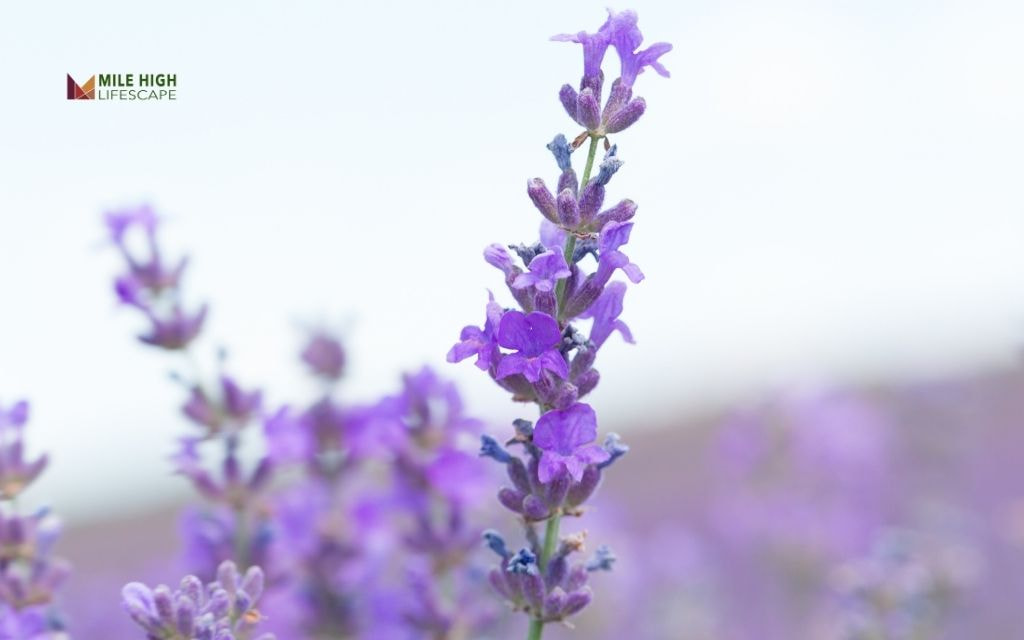
Step 6: Planting Flowers in the Bed (Spacing & Technique)
Layout all plants in their containers before digging holes. This allows you to adjust spacing and arrangement without damaging roots. Follow spacing recommendations on plant tags to prevent overcrowding that leads to disease and poor air circulation.
Dig planting holes twice as wide as the root ball but no deeper. In Colorado’s clay soil, planting too deep causes water to collect around roots, leading to rot and plant death. The top of the root ball should sit level with or slightly above the surrounding soil surface.
Gently tease apart circled roots before planting. Root-bound plants struggle to establish in new soil, often remaining stunted despite adequate care. Score vertical cuts in severely root-bound specimens to encourage outward growth.
Backfill holes with your amended soil mixture, watering as you go to eliminate air pockets. Air pockets cause roots to dry out and die, preventing proper establishment. Firm soil gently around plants without compacting the growing medium.
Apply a thin layer of compost or worm castings around each plant after installation. This provides slow-release nutrients and beneficial microorganisms that support root development. Water deeply after planting to settle soil and provide initial moisture for establishment.
Step 7: Mulching, Edging & Watering
Apply 2 – 3 inches of appropriate mulch around plants, keeping material away from stems to prevent rot and pest problems.
- Shredded bark works well for traditional flower beds, breaking down slowly to improve soil structure. Small gravel mulch suits xeriscape designs, reflecting heat and requiring no replacement.
- Compost mulch provides continuous soil improvement but requires annual reapplication. This organic option feeds beneficial soil organisms while suppressing weeds and retaining moisture.
- Mix different mulch types for visual interest and functional benefits.
Install permanent edging to maintain clean bed lines and prevent grass invasion.
- Metal edging provides crisp, modern lines that withstand Colorado’s freeze-thaw cycles.
- Natural stone creates rustic borders that complement native plantings.
- Plastic edging offers budget-friendly options but may become brittle in extreme temperatures.
Establish consistent watering schedules based on seasonal needs and plant requirements.
- Water early morning to minimize evaporation and reduce disease pressure.
- Deep, infrequent watering encourages deep root development that improves drought tolerance.
Monitor soil moisture regularly, especially during establishment. Most flowers require consistent moisture for the first growing season while roots develop. Once established, many Colorado-adapted plants tolerate dry periods between waterings.
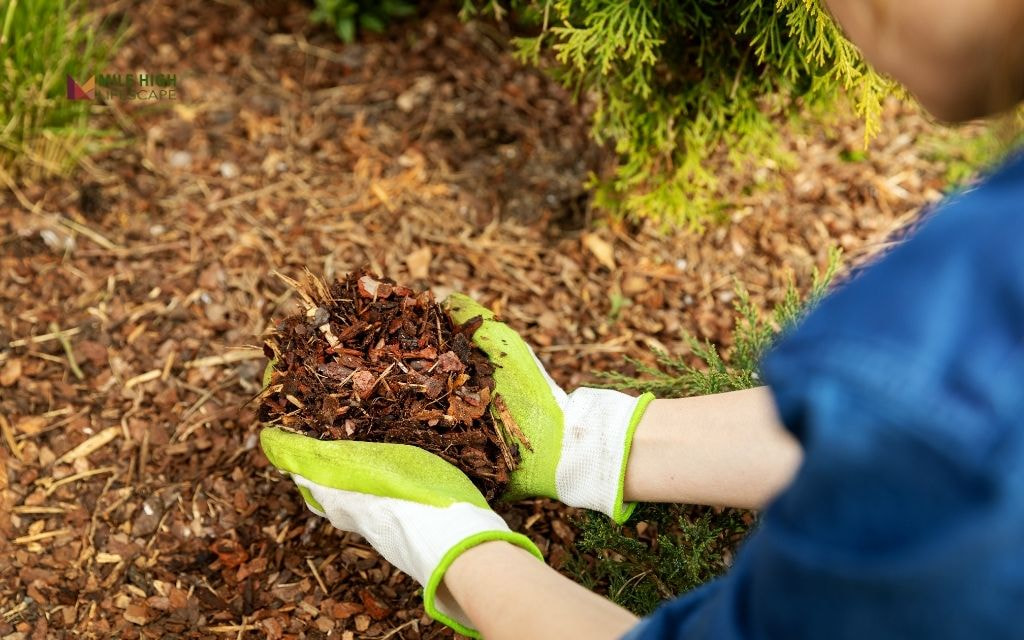
Optional Enhancements for a Professional Look
- Solar lighting extends garden enjoyment into evening hours while highlighting favorite plants and pathways. LED options provide reliable performance with minimal energy consumption.
- Decorative trellises support climbing flowers while adding vertical interest to flat landscapes. Use weather-resistant materials like powder-coated metal or naturally rot-resistant cedar. Position trellises to provide wind protection for tender plants.
- Incorporate boulders as focal points that anchor plantings and provide visual weight. Colorado sandstone and granite complement native plant palettes while requiring no maintenance.
- Birdbaths attract beneficial wildlife while providing water sources during dry periods. Choose shallow basins with rough surfaces that provide secure footing for birds. Position near protective shrubs but away from potential predator hiding spots.
- Create seating areas within or adjacent to flower beds for close garden observation. Simple benches allow you to enjoy morning coffee surrounded by blooms. Built-in seating using retaining wall blocks provides permanent solutions that double as bed borders.
Flower Bed Care Tips for Denver Homeowners
Seasonal Watering Guidelines
- Spring requires frequent watering to support new growth and establishment.
- Summer watering should occur early in the morning, providing deep soaks rather than light, frequent applications.
- Fall watering helps plants prepare for winter, while winter watering may be necessary during dry periods.
Essential Maintenance Tasks
Deadhead spent flowers regularly to encourage continued blooming and prevent unwanted self-seeding. Remove weeds when soil is moist for easier extraction. Reapply mulch as needed to maintain two-inch depth for optimal weed suppression and moisture retention.
Seasonal Plant Management
Transition from spring to summer bloomers by removing finished annuals and replacing with heat-tolerant varieties. Plant fall-blooming flowers like asters and mums in midsummer for autumn color. Prepare tender perennials for winter by reducing watering and avoiding late-season fertilization.
Long-term Garden Health
Divide overgrown perennials every 2-3 years to maintain vigor and prevent overcrowding. Spring division works best for fall-blooming plants, while fall division suits spring bloomers. Share divisions with neighbors to expand plant variety economically.
Test soil every three years to monitor pH and nutrient levels. Amend soil based on test results rather than guessing plant needs.
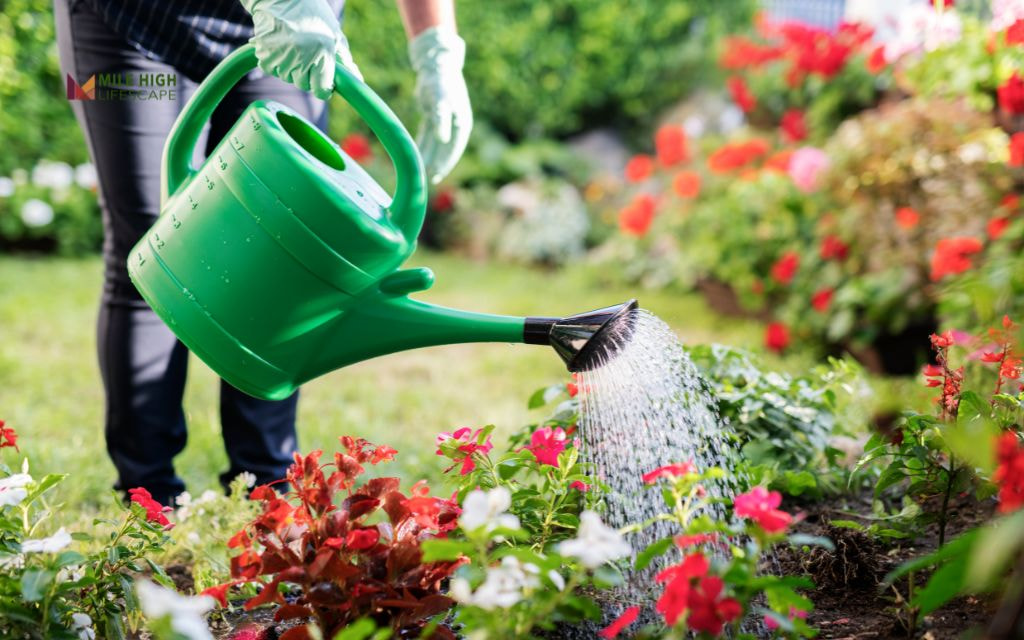
Conclusion
Creating a successful flower bed in Colorado requires understanding local climate challenges and choosing appropriate solutions. Smart planning, climate-specific plant selection, and proper soil preparation create gardens that thrive despite altitude, temperature extremes, and limited precipitation.
Start with manageable bed sizes and expand as your confidence and experience grow. Each season brings new learning opportunities and chances to refine your approach. Success builds upon itself, creating gardens that improve with age and provide increasing satisfaction over time.
For homeowners seeking garden and flower bed installations Denver, Mile High Lifescape is the best place to go. We offer expert Denver landscaping services and can help you create beautiful, sustainable flower beds that enhance your property value while supporting local ecosystems.
Frequently Asked Questions (FAQs)
What is the best way to layout a flower bed?
The best way to layout a flower bed is to start with simple rectangular or gently curved shapes for easiest maintenance. Keep beds 3-4 feet deep maximum for easy access from both sides. Place tall plants in back, medium height in center, and low-growing varieties along edges for optimal visual impact and sun exposure.
What month should you start a flower garden?
Begin soil preparation in April when ground thaws, but wait until mid-May for planting tender annuals. Perennials can be planted earlier, typically late April to early May, as they tolerate light frost better than annual flowers.
What is the best base for a flower bed?
Mix forty percent existing soil with 40% organic compost and 20% coarse sand for optimal drainage and nutrition. Avoid using only bagged topsoil, which lacks beneficial microorganisms and proper mineral content.
What flowers grow best in Colorado’s high-altitude zones?
Penstemon, Black-eyed Susan, and Columbine thrive as perennials, while marigolds, petunias, and cosmos work well as annuals. Drought-tolerant options like blanket flower, salvia, and yarrow require minimal water once established.
Can I use drip irrigation for my flower beds?
Yes, drip irrigation works excellently for Colorado flower beds. This system delivers water directly to root zones, reducing evaporation and meeting Denver water restriction requirements. Install before planting for easiest setup, or use soaker hoses as a budget-friendly alternative that provides similar benefits.
